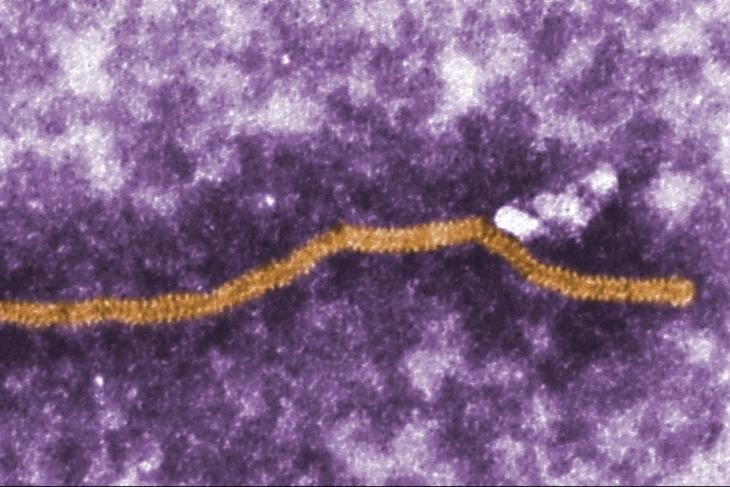Pirbright Institute researchers working on vaccine against Nipah virus in pigs that will help protect people in high-risk areas.

World Zoonoses Day is held every year on July 6 to commemorate the anniversary of Louis Pasteur’s successful administration of a vaccine against the rabies virus -- a zoonotic virus -- to Joseph Meister on July 6, 1885, and is dedicated to raising awareness of awareness and understanding of zoonotic diseases, according to announcements from The Pirbright Institute in the U.K. and the Texas Veterinary Medical Assn. (TVMA).
Zoonoses, also known as zoonotic diseases, are caused by viruses, bacteria and parasites, as well as other unconventional agents that spread from vertebrate animals to humans, Pirbright said. The wide range of species affected creates both public health and livestock food production problems, resulting in major socioeconomic disruption.
The Texas Veterinary Medical Assn. (TVMA), pointing to data from the Centers for Disease Control & Prevention, said outbreaks of zoonotic diseases, including the Ebola virus, avian influenza and West Nile virus, “result in high morbidity and mortality rates in humans and animals, cause disruptions of regional and global trade and strain national and global public health resources.”
Other zoonotic diseases include severe acute respiratory syndrome, Zika and HIV.
TVMA said animals significantly contribute to the spread of zoonotic diseases, with 75% of new or emerging diseases originating in animals, while more than 60% of known infectious diseases in people -- such as the rabies virus, ringworm and salmonella -- are transmitted from animals, according to CDC.
This emphasizes the importance of the veterinary profession’s involvement in addressing zoonotic diseases, TVMA said, noting how the One Health initiative encourages collaborative efforts of multiple disciplines on local, national and global levels to achieve optimal health for people, animals and the environment.
“Though often neither the veterinarian nor the animal owner realizes it, every day, veterinarians protect the health of animal owners by vaccinating against or diagnosing and treating zoonotic diseases,” said TVMA member James Wright, a retired public health veterinarian who served for 20 years as chair of the TVMA One Health Committee.
Nipah virus candidate
Zoonoses are a focus of research at The Pirbright Institute, which works to enhance the capability to contain, control and eliminate viral diseases of livestock and those that can spread from animals to humans.
For example, Nipah virus (NiV) infection is an example of a newly emerging zoonotic virus that infects and causes disease in a wide range of animals as well as humans, Pirbright said.
Earlier this year, an outbreak of NiV in southern India caused the deaths of 17 people, although no new cases have been reported since May 30. Despite periodic outbreaks and an estimated risk to more than 2 billion people through the broad host range of the virus and the widespread distribution of the NiV natural reservoir species — Old World fruit bats — no vaccines or therapeutics are currently approved for human or livestock use, Pirbright reported.
Dr. Simon Graham, leader of Pirbright's Porcine Reproductive & Respiratory Syndrome Immunology group, has been awarded a grant from Innovate UK to lead an international team developing an inexpensive, safe and effective vaccine to protect pigs against NiV. Pigs played a significant role in the transmission of the virus to humans during the first recorded outbreak of NiV in Malaysia in 1998-99 and its spread to Singapore, the institute said.
Researchers at Pirbright, the University of Oxford in England, the University of Queensland and the Commonwealth Scientific & Industrial Research Organization (CSIRO) in Australia, the University of Malaya in Malaysia and the Assam Agricultural University in India are working towards developing a variety of vaccine candidates that will then be tested in pigs, with the idea that the strongest candidate will go forward for further development and testing, the announcement said.
Dr. Dalan Bailey and the Viral Glycoproteins group study how viruses use glycoproteins — the proteins that stick out from viruses like spikes — to attach to and enter the cells they infect. For the Innovate UK grant project, they are developing four NiV vaccine candidates, one of which is engineered to produce a secreted form of the NiV glycoprotein G (sG), which may produce a robust, virus-neutralizing serum antibody response.
Pirbright said the primary goal of the research is to develop a NiV vaccine for use in pig populations where Nipah is present. “Developing an NiV vaccine for pigs will help protect pig farming and livestock food production in areas of the world where high pig density overlaps with high NiV infection risk,” Graham said.
Underscoring the mission of Pirbright to prevent and control viral diseases that spread from animals and humans, Graham added that “any vaccine developed will be useful in other mammalian species, and data generated from the project will support further efforts to develop human NiV vaccines.”
About the Author(s)
You May Also Like


.png?width=300&auto=webp&quality=80&disable=upscale)
